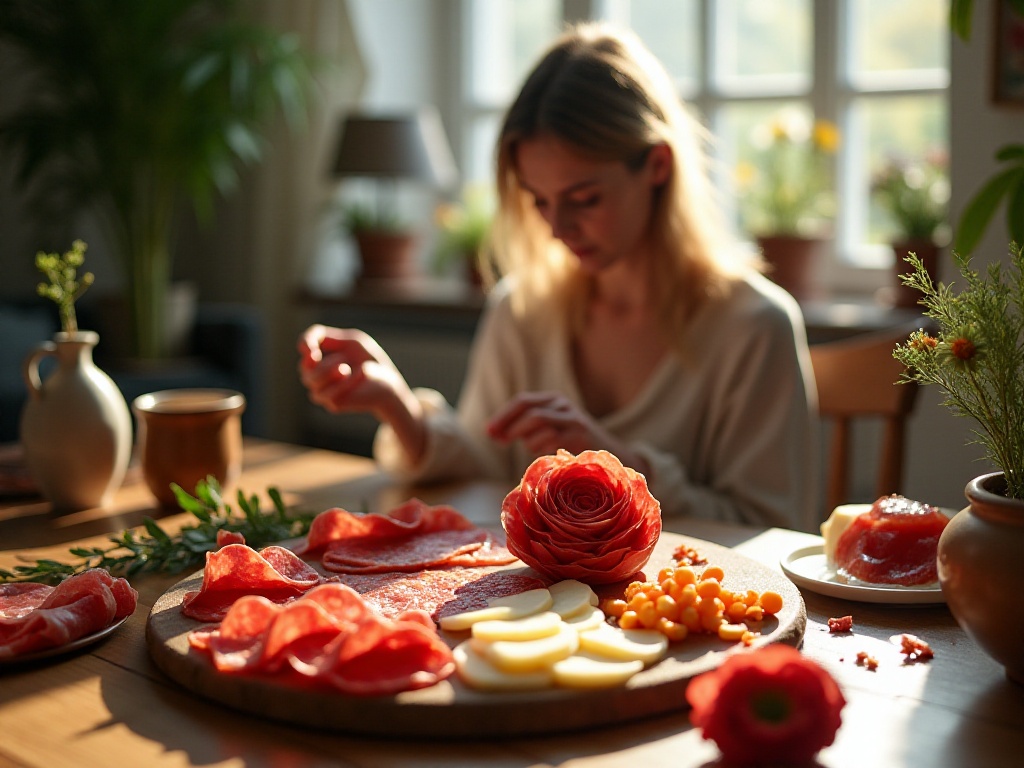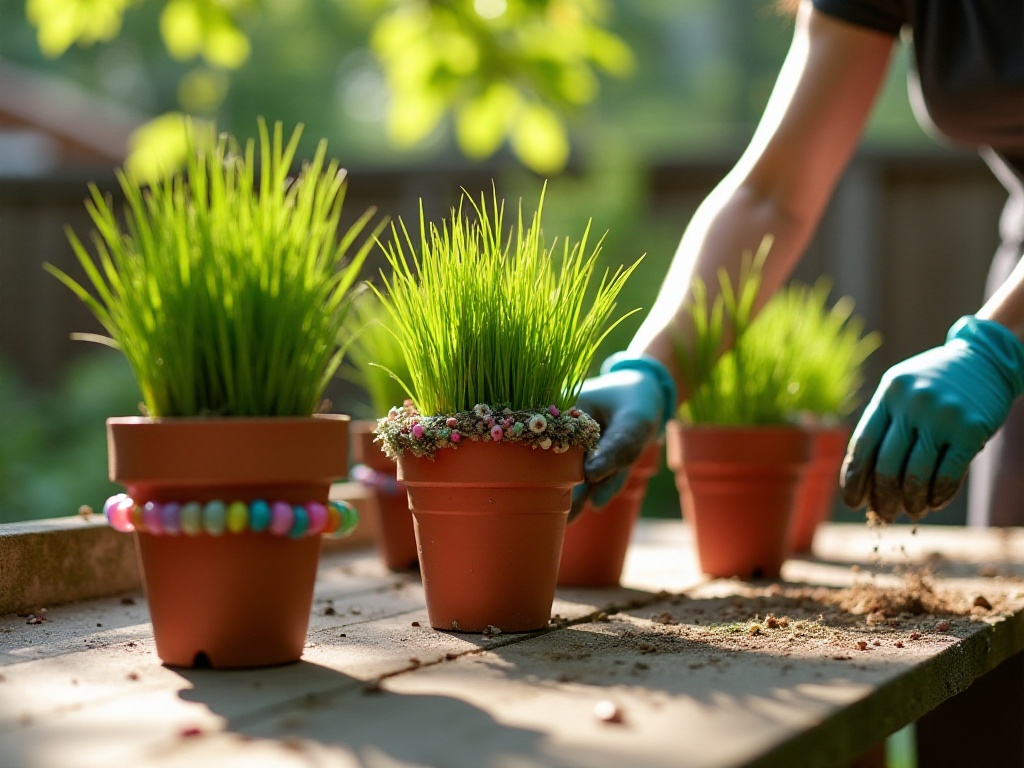Introduction
Working in the kitchen every day, you really encounter various challenging small problems. As someone who just started living alone while working, I deeply relate to this. At first, I was always in a fluster, finding even basic seasoning difficult. However, after some exploration and experimentation during this time, I've summarized some particularly useful tips that I'd like to share with everyone today, hoping to help make your kitchen life more relaxed and enjoyable.
The Art of Seasoning
Last week while organizing my kitchen, I found a jar of separated peanut butter, which happens to be my favorite breakfast companion. Looking at the layer of oil on top and the dry peanut paste below, I felt quite discouraged. Stirring vigorously with a spoon felt particularly laborious and risked making a mess everywhere; not stirring seemed too wasteful.
Later, while browsing the food section online, I accidentally discovered a particularly clever mixing method: place the peanut butter jar upside down overnight, then gently stir it a few times the next day, and the oil will blend evenly into the peanut butter. After trying it, the effect was really great - not only does it save effort, but it also makes the peanut butter texture particularly smooth. Now I don't panic whenever I see separated peanut butter.
Speaking of seasoning, I also want to share a tip about using soy sauce. Many people, like me, used to pour soy sauce directly into the wok while cooking, resulting in dishes that were either too salty or not flavorful enough. Actually, there's a particularly useful method: first pour the soy sauce into a spoon, then slowly pour it along the edge of the wok. This not only helps control the amount but also allows the soy sauce to evaporate quickly at high temperatures, making the dish more flavorful.
I've also discovered that when marinating meat, adding a bit of white wine or cooking wine can make the meat more tender. But be careful not to add too much, or it will overpower the main flavor. Generally, one tablespoon of cooking wine per pound of meat is enough. It's best to wrap the marinating meat in plastic wrap and put it in the refrigerator, which prevents odor transfer and improves the marinating effect.

Ingredient Processing
Processing ingredients is truly an art. I used to think cutting vegetables was simple, but when actually doing it, I discovered that achieving both speed and quality requires some technique. For example, when cutting green onions, I learned a particularly useful method: first fold the green onion in half, then hold it with your fingers - this way, cutting is not only faster but also results in more uniform pieces.
Regarding herbs, I used to struggle with removing leaves from stems. Once while watching a cooking show, I learned a particularly useful trick: prepare a strainer, thread the herb stems through the small holes, and gently pull back - the leaves will automatically be stripped off. This method is absolutely a blessing for those of us who cook frequently. Now I no longer worry about stripping herb leaves.
Processing garlic is also a skilled task. I used to smash it with a knife, which either crushed the garlic or left my hands very smelly. Later I discovered you can put garlic in a clean glass jar and shake it vigorously - this way the peels will automatically fall off, and your hands won't smell like garlic. If your hands still smell after processing, you can rub them with a stainless steel spoon under running water to remove the garlic smell.
Fruit processing also requires technique. For example, when cutting pineapple, many people directly cut off the skin, which actually wastes a lot of flesh. The correct method is to first cut the pineapple horizontally into thick slices, then use a small knife to cut around the edge of the flesh - this way you can remove the flesh completely. Plus, the pineapple slices cut this way look particularly attractive.
Storage and Organization
Storage is definitely a major challenge in the kitchen. Especially for someone like me who rents, with a kitchen that's already small, poor storage can easily make it look very messy.
Speaking of cheese storage and cutting, this is really a headache. I used to use a knife, which either couldn't cut through or would crush the cheese. Until one day, I discovered a super useful method: use dental floss to cut cheese. You heard right, just regular dental floss. This not only creates neat cuts but also doesn't crush the cheese. Also, leftover cheese can be wrapped in plastic wrap and stored in a dedicated sealed container, keeping it fresh without transferring odors.
Seasoning storage is also key. I now keep frequently used seasonings on a turntable, which not only saves space but is also very convenient for access. For seasonings that easily absorb moisture, like sugar and salt, I put a desiccant in the lid to prevent clumping.
As for various pots and pans, I discovered we can use wall space by installing hooks, which not only saves cabinet space but also makes access very convenient. However, it's important to choose hooks with strong weight-bearing capacity and secure them firmly, otherwise it would be troublesome if cookware falls.

Cleaning Tips
Cleaning is really a particularly important topic. After all, a clean and tidy kitchen not only improves mood but also makes cooking more motivating.
Oven door grease is really frustrating. I remember when I first bought my oven, after using it for a short while, the door became very greasy and uncomfortable to look at. After trying many methods, I finally found a particularly effective cleaning solution: make a paste with baking soda and white vinegar, apply it to the oven door, let it sit for 20 minutes, then wipe with a damp cloth, and the grease can be easily removed. Plus, this method won't damage the oven's surface, making it particularly safe to use.
Cookware cleaning is also an issue worth attention. Especially those burnt pot bottoms can be really frustrating. However, I discovered that just by pouring an appropriate amount of water into the pot, adding a slice of lemon, and bringing it to a boil, the burnt residue becomes soft and easy to clean. If it's still difficult to clean, you can try making a paste with baking soda and hot water, apply it to the burnt residue, let it sit for a while, then gently scrub with a brush - the effect is also very good.
Cutting board cleaning and maintenance are also important. After each use, I wipe the cutting board with salt water, which not only removes odors but also has a sterilizing effect. For wooden cutting boards, occasionally wipe them with cooking oil to prevent cracking. It's best to prepare two cutting boards, one specifically for raw food and another for cooked food, to avoid cross-contamination.
Food Preservation
Food preservation is truly a major subject. Especially now that many people like to stock up on food, improper storage can not only cause waste but might also affect health.
Frozen food storage requires special attention. Many people have probably encountered this situation: food in freezer bags becomes one big block, making it very inconvenient to use. Actually, before freezing, you can spread the food flat, which not only saves space but also makes portioning easier. It's also best to mark the date on freezer bags so you know how long the food has been stored, avoiding expiration.
Vegetable preservation also has its techniques. For leafy vegetables like lettuce, it's best to wrap them in preservation bags and store them in the refrigerator's produce drawer. If you notice the leaves becoming slightly wilted, you can soak them in ice water to restore some moisture. Before storage, it's best to remove any spoiled or yellowed leaves to extend shelf life.
Fruit preservation also requires attention. Fruits like apples and bananas that produce ethylene should be stored separately from other fruits, otherwise they'll accelerate the ripening of other fruits. Also, some fruits shouldn't be refrigerated, like bananas and pineapples, as refrigeration actually accelerates spoilage.

Creative Consumption
Actually, cooking isn't just about filling our stomachs; more importantly, it's about learning to enjoy the process. Through some creative methods, we can make ordinary ingredients more delicious.
Chips and dips are indeed irresistible, but often we encounter the awkwardness of not having enough dip or spilling it. I recently discovered that we can separate broken chip pieces from whole chips and eat the broken pieces mixed with dip, which not only prevents waste but is also particularly delicious. Plus, you can make different dips according to personal preference, like garlic soy sauce or mustard mayonnaise, creating different taste experiences each time.
Bread slices can also be eaten creatively. For example, you can cut bread slices into small squares, brush them with olive oil, sprinkle some Italian herbs, then bake them in the oven until golden brown to make crispy croutons. These croutons can be paired with salad or eaten as snacks - they're particularly tasty.

Afterword
Honestly, these life tips may seem simple, but they can really make our daily lives more convenient. From initially being flustered to now being able to handle various kitchen issues with composure, this process has made me deeply realize that every detail in life is worth our serious attention and continuous improvement.
Through these tips, we can spend more time and energy on truly important things. For example, we can spend more time researching new recipes or enjoying food with friends. After all, good food not only satisfies our taste buds but also makes life more beautiful.
I hope these experiences can help you. Let's make life more refined and composed together, making every meal full of anticipation and enjoyment.
Related articles




